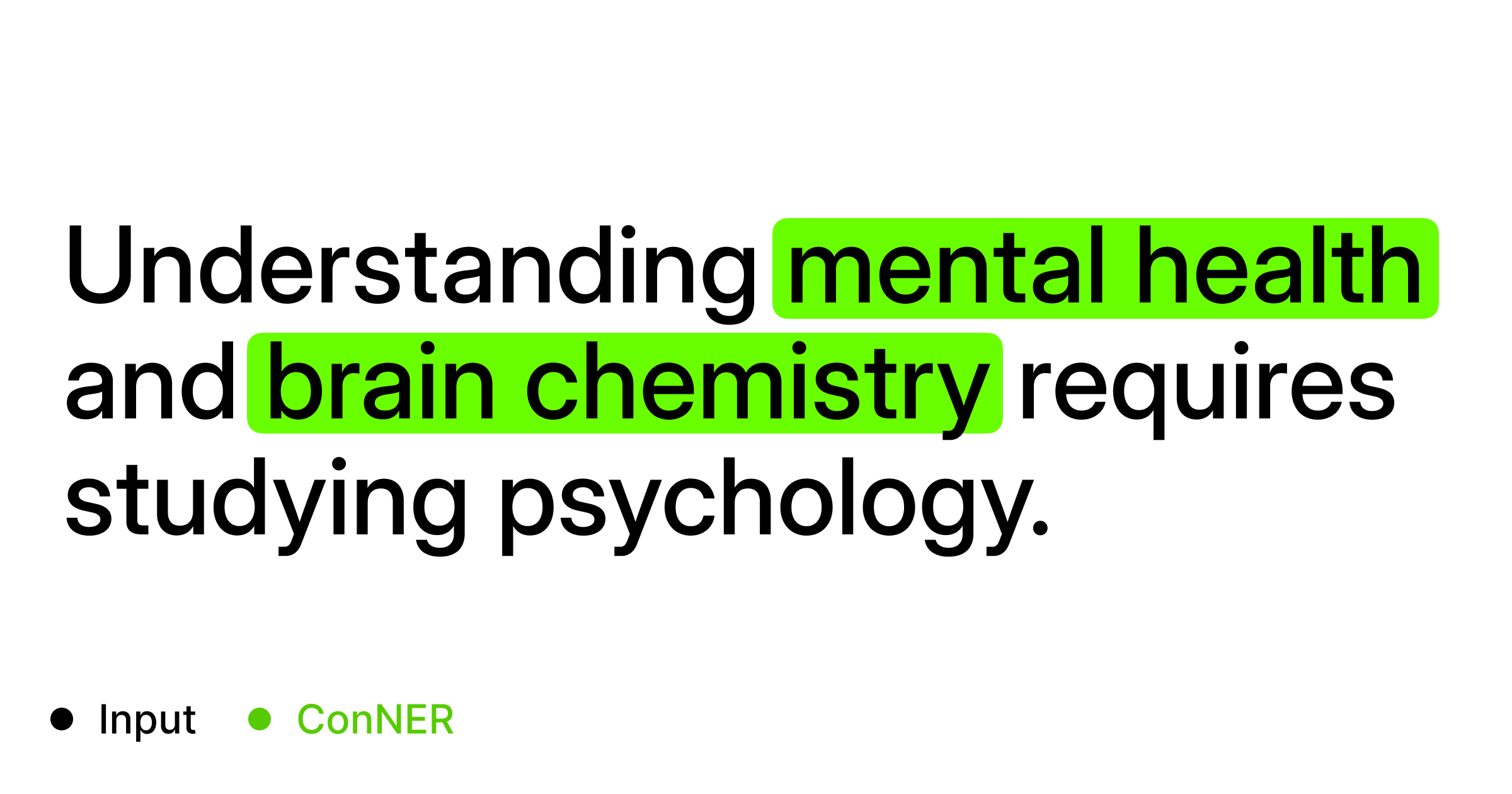ConNER is a neural sequence labeling model that identifies domain-specific concepts in text using BIO (Beginning, Inside, Outside) tagging. It's built on top of BERT and fine-tuned for concept extraction tasks.
- BERT-based token classification architecture
- BIO tagging scheme for concept boundary detection
- Support for variable-length sequences
- Automatic handling of WordPiece tokenization
- Configurable maximum sequence length
- Built-in concept extraction pipeline
Given any text paragraph (no longer than 3 sentences), ConNER can extract the academic concepts from the text. For example, given the following text:
Understanding mental health and brain chemistry requires studying psychology.
ConNER will output the following entities:
['mental health', 'brain chemistry']
Same as the following code:
from conner import ConNER
model = ConNER.load_model("saved_models/conner")
concepts = model.extract_concepts(
"Understanding mental health and brain chemistry requires studying psychology."
)
print(f"Identified concepts: {", ".join(concepts)}")- Base: BERT (default:
prajjwal1/bert-tiny) - Dropout layer (rate=0.1)
- Dense classification layer (3 classes: O, B-CONCEPT, I-CONCEPT)
- Attention mask application for variable-length sequences
- Label scheme:
- O: Non-concept tokens
- B-CONCEPT: Beginning of concept
- I-CONCEPT: Inside/continuation of concept
